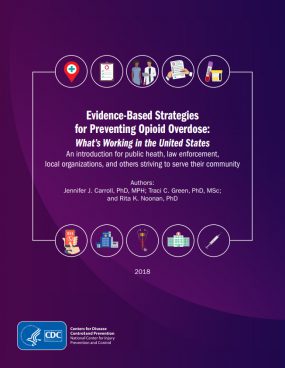Strategies and Partnerships
CDC provides data and resources to equip and inform states, territories, and local jurisdictions to help improve opioid prescribing practices, improve linkage to care for the treatment of opioid use disorder, and prevent and reverse overdoses.
Promising Strategies
The following examples of evidence-based and promising strategies can help states, territories, and local communities prevent overdoses and ensure the health and wellbeing of their residents:
- Promote and support the use of the 2022 CDC Clinical Practice Guideline for Prescribing Opioids for Pain.
- Integrate quality improvement measures into clinical practice.
- Consider ways to increase and maximize use of prescription drug monitoring programs (PDMPs), which are among the most promising state-level interventions to improve opioid prescribing, inform clinical practice, and protect patients at risk.
- Help healthcare providers use best practices through a process called academic detailing—structured visits by trained professionals who can provide tailored training and technical assistance.
- Improve prescribing practices to reduce patient risk for overdose and assess Medicaid, workers’ compensation programs, and state-run health plans.
- Increase access to evidence-based substance use disorder treatment services, including medications for opioid use disorder (MOUD).
- Enhance services for individuals with opioid use disorder involved in the criminal justice system. Services include targeted naloxone distribution, overdose education, and medication for opioid use disorder in jails, prisons, and other correctional settings.
- Expand access to naloxone; effective approaches include community distribution programs, co-prescription of naloxone, and equipping first responders.
- Consider 911 Good Samaritan Laws, which refer to local or state legislation that provides people experiencing overdose or bystanders with limited immunity from drug-related criminal charges and other criminal or judicial consequences that may otherwise result from calling first responders to the scene.
- Educate consumers about the risks of prescription opioid misuse and the importance of discussing safer and more effective pain management with healthcare providers. An example of a consumer-focused effort is CDC’s Rx Awareness Campaign, which tells the stories of people whose lives were impacted by prescription opioids.
- Help local jurisdictions put effective practices to work in communities where substance use disorder is common.
Additional Information on Partnerships
Read ten opioid overdose prevention strategies for people serving their communities.


